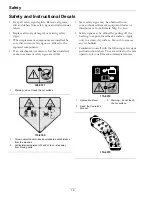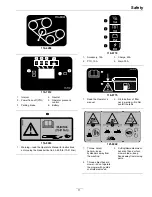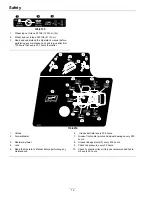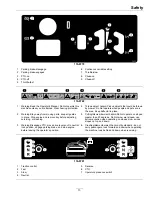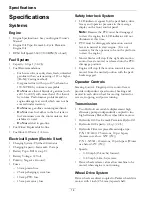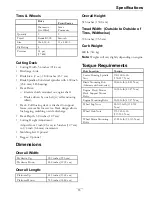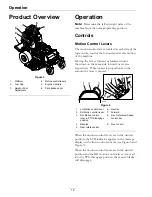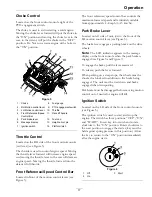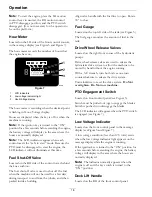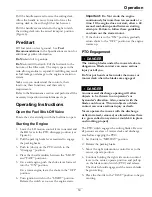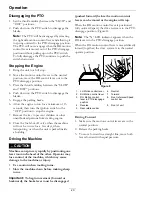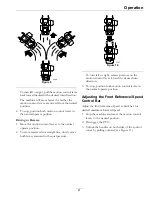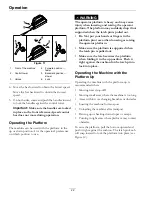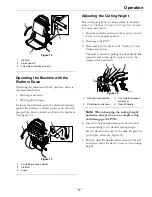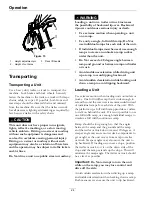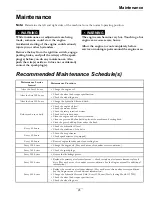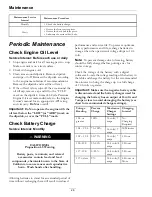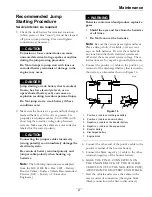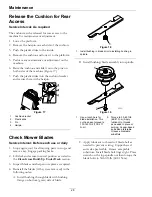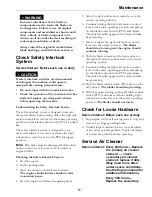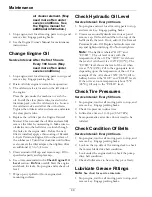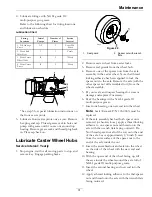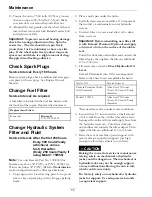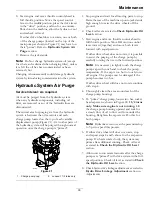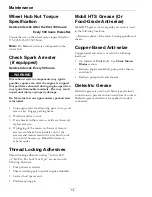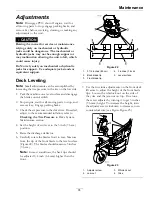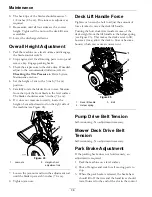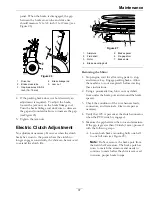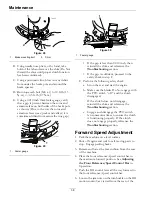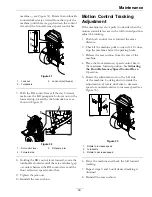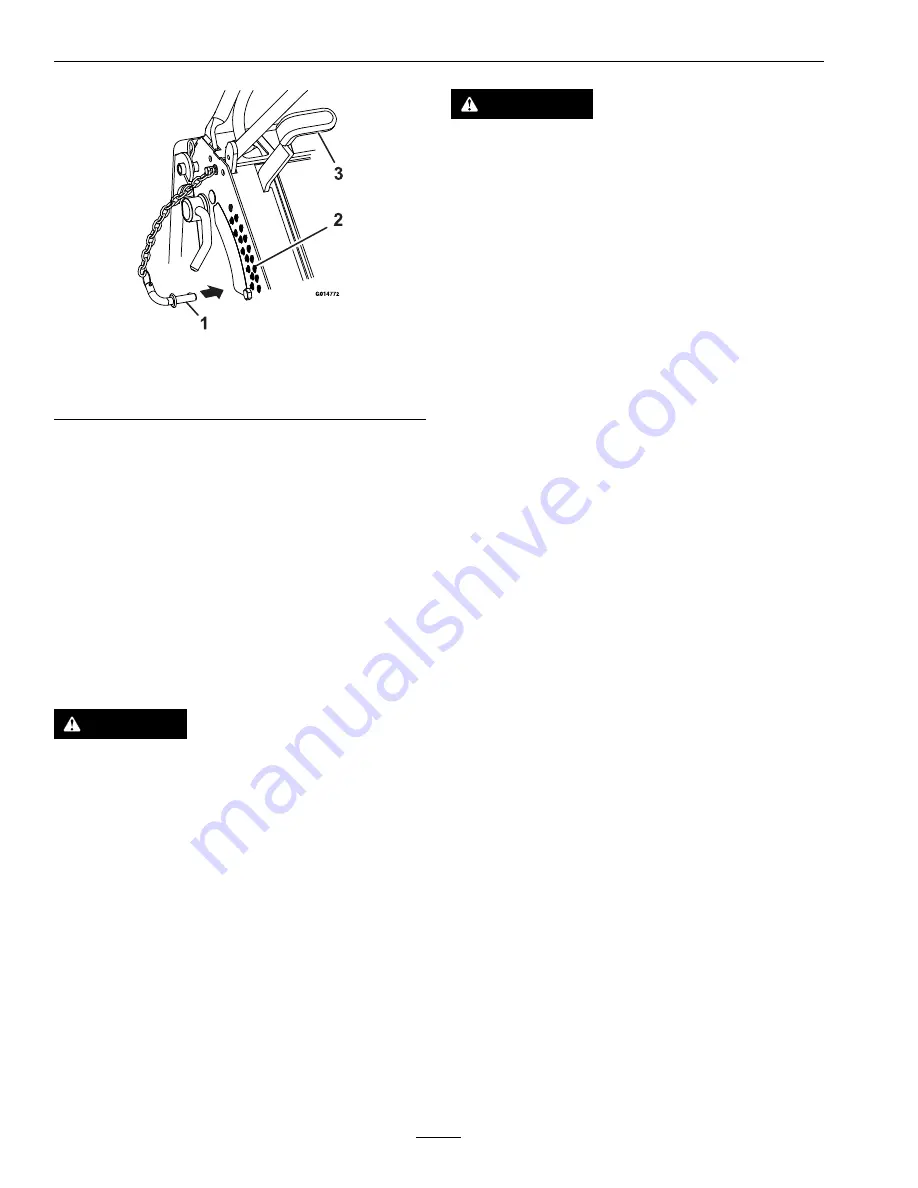
Operation
Figure 15
1.
Height adjustment pin
3.
Deck lift handle
2.
Height of cut holes
Transporting
Transporting a Unit
Use a heavy-duty trailer or truck to transport the
machine. Lock brake and block wheels. Securely
fasten the machine to the trailer or truck with straps,
chains, cable, or ropes. If possible, both front and
rear straps should be directed down and outward
from the machine. Be sure that the trailer or truck
has all necessary lighting and marking as required by
law. Secure a trailer with a safety chain.
CAUTION
This unit does not have proper turn signals,
lights, reflective markings, or a slow moving
vehicle emblem. Driving on a street or roadway
without such equipment is dangerous and
can lead to accidents causing personal injury.
Driving on a street or roadway without such
equipment may also be a violation of State laws
and the operator may be subject to traffic tickets
and/or fines.
Do Not drive a unit on a public street or roadway.
WARNING
Loading a unit on a trailer or truck increases
the possibility of backward tip-over. Backward
tip-over could cause serious injury or death.
•
Use extreme caution when operating a unit
on a ramp.
•
Use only a single, full width ramp; Do Not
use individual ramps for each side of the unit.
•
If individual ramps must be used, use enough
ramps to create an unbroken ramp surface
wider than the unit.
•
Do Not exceed a 20 degree angle between
ramp and ground or between ramp and trailer
or truck.
•
Avoid sudden acceleration while driving unit
up a ramp to avoid tipping backward.
•
Avoid sudden deceleration while backing unit
down a ramp to avoid tipping backward.
Loading a Unit
Use extreme caution when loading units on trailers or
trucks. One full width ramp that is wide enough to
extend beyond the rear tires is recommended instead
of individual ramps for each side of the unit. With
the platform up, a full width ramp provides a surface
to walk on behind the unit. If it is not possible to use
one full width ramp, use enough individual ramps to
simulate a full width continuous ramp.
Ramp should be long enough so that the angles
between the ramp and the ground and the ramp
and the trailer or truck do not exceed 20 degrees. A
steeper angle may cause mower deck components to
get caught as the unit moves from ramp to trailer
or truck. Steeper angles may also cause the unit to
tip backward. If loading on or near a slope, position
the trailer or truck so it is on the down side of the
slope and the ramp extends up the slope. This will
minimize the ramp angle. The trailer or truck should
be as level as possible.
Important:
Do Not attempt to turn the unit
while on the ramp, you may lose control and
drive off the side.
Avoid sudden acceleration when driving up a ramp
and sudden deceleration when backing down a ramp.
Both maneuvers can cause the unit to tip backward.
24

